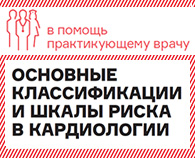CHEST Guideline for Antithrombotic Therapy in VTE
The following are 11 key points about this updated guideline document from the American College of Chest Physicians on antithrombotic therapy for venous thromboembolism (VTE):
- For VTE without an associated cancer diagnosis, all direct oral anticoagulants (dabigatran, rivaroxaban, apixaban, or edoxaban) are recommended over vitamin K antagonist (VKA) therapy (all Grade 2B) and VKA therapy is recommended over low molecular weight heparin (LMWH; Grade 2C).
- For VTE associated with cancer, LMWH is recommended over VKA (Grade 2B) or any direct oral anticoagulants (all Grade 2C).
- Anticoagulants should stop after 3 months of therapy in patients with an acute, proximal deep venous thrombosis (DVT) provoked by surgery rather than shorter or longer treatment courses (Grade 1B).
- Anticoagulants should also be stopped after 3 months in patients with a proximal DVT or pulmonary embolism (PE) provoked by a nonsurgical transient risk factor over shorter or longer courses (Grade 1B for high bleeding risk patients, Grade 2B for low or moderate bleeding risk patients).
- Anticoagulation should be given for 3 months in patients with a first unprovoked VTE and a high risk of bleeding (Grade 1B), but should be extended without a scheduled stop date in patients with a low or moderate risk of bleeding (Grade 2B).
- For patients with acute VTE who are treated with anticoagulation, the guideline recommends against the use of an inferior vena cava filter (Grade 1B).
- For patients with an unprovoked proximal DVT or PE who are stopping anticoagulant therapy, the guideline suggests the use of aspirin over no aspirin to prevent recurrent VTE if there are no contraindications to aspirin therapy (Grade 2B).
- For patients with acute DVT, the guideline recommends against the use of compression stockings routinely to prevent the post-thrombotic syndrome (Grade 2B).
- For patient with subsegmental PE and no DVT, the guideline suggests clinical surveillance over anticoagulation when the risk of VTE recurrence is low (Grade 2C). The guideline recommends the use of anticoagulation over surveillance when the risk of VTE recurrence is high (Grade 2C).
- For patients with an acute PE and hypotension (massive PE), the guideline recommends the use of thrombolytic therapy (Grade 2B), preferring systemic therapy over catheter-directed thrombolytic therapy (Grade 2C).
- For patients with recurrent VTE while treated with a non-LMWH anticoagulant, the guideline recommends changing to LMWH therapy (Grade 2C). If patients suffer a recurrent VTE while on LMWH treatment, the guideline recommends increasing the LMWH dose (Grade 2C).
Source: www.acc.org






